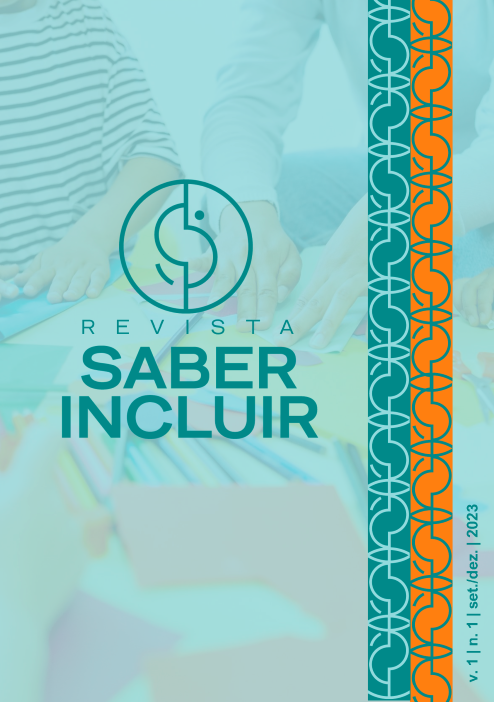READING AND WRITING IN THE PORTUGUESE LANGUAGE FOR DEAF PEOPLE
an experience in the Institutional Program of Scolarships to Introduce Teaching - PIBID
Keywords:
Deaf Education, Reading, Writing, Portuguese Language, LibrasAbstract
The insertion of deaf students into Brazilian schools is ensured by the Law 14. 191 from 2021, which includes bilingual education for deaf students to the LDB (Educational Directives and Bases Law). The educational venues, in this regard, majorly do not present adequate structures to receive deaf students; not only that, but developing the abilities to read and write in the Portuguese language is one of the main challenges that permeate classrooms; the institutional program of scolarships to introduce scientific research (PIBID) Portuguese/Brazilian Sign Language (LIBRAS) of the Federal University of Pará/UFPA at Bragança's campus develops the research around the teaching of Portuguese as a second language to deaf students from public state schools in the city of Bragança, Pará. Its aims are to develop the students' reading, writing and textual interpretation skills. In order to do so, the theoretical referentials used were Ângelo and Menegassi (2022), Skliar (2013) and Quadros (2006), which point manners of teaching deaf students dynamically and interactively aided by pedagogical resources. The relevance of this study brings contributions to the inclusive education of the deaf students from Brazilian regular schools. The method utilised is a qualitative approach, implemented through a participative research. The results show that the when considering the production of written texts in the Portuguese language by deaf students, relevance should be given to its contents, which should also be allied to the student's linguistic knowledge, promoting social conscience, semantic conscience, coherence and logical sequencing. In this sense, the activities developed should establish the relationship between the two languages, in a critical visual-spacial approach.
Downloads
References
ANGELO, Cristiane Malinoski Pianaro; MENEGASSI, Renilson José. Conceitos de leitura e ensino de língua. In: ANGELO, Cristiane Malinoski Pianaro; MENEGASSI, Renilson José; FUZA, Ângela Francine (orgs.). Leitura e Ensino de Língua. São Carlos: Pedro & João Editores, 2022.
ALMEIDA, WG. (org). Educação de surdos: formação, estratégias e prática docente [online]. Ilhéus, BA: Editus, 2015.
BRASIL. Lei nº 14.191, de 03 de agosto de 2021. Altera a Lei nº 9.394, de 20 de dezembro de 1996 (Lei de Diretrizes e Bases da Educação Nacional), para dispor sobre a modalidade de educação bilíngue de surdos. Disponível em: https://www.planalto.gov.br/ccivil_03/_ato2019-2022/2021/lei/l14191.htm. Acesso em: 20 nov. 2023.
BRASIL. Lei nº 10.436 de 24 de abril de 2002. Dispõe sobre a Língua Brasileira de Sinais - Libras e dá outras providências. Brasília: Congresso Nacional, 2002.
DECLARAÇÃO DE SALAMANCA: Sobre Princípios, Políticas e Práticas na Área das Necessidades Educativas Especiais, 1994, Salamanca-Espanha.
GOENBERG, Mirian, A Arte de Pesquisar, como fazer pesquisa qualitativas em ciências sociais. 12. Ed. São Paulo: Record, 2011.
FREIRE, Paulo. Pedagogia da autonomia: saberes necessários à prática educativa. 24 ed. São Paulo: Paz e Terra, 1996.
MAZZARO, J. L. Baixa visão na escola: conhecimentos e opiniões de professores e pais de alunos deficientes visuais, em Brasília, DF. 2007. Tese (Doutorado em Educação) - Programa de Pós-Graduação em Educação, Universidade Estadual de Campinas, Campinas, 2007.
QUADROS, Ronice M. de. Ideias para Ensinar Português para Alunos Surdos. Brasília-DF: Lagoa Editora, 2006.
QUADROS, Ronice M. de; KARNOPP, Lodenir B. Língua Brasileira de Sinais: Estudos linguísticos. Porto Alegre: Artmed, 2004.
SKLIAR, Carlos. Os Estudos Surdos em Educação: problematizando a normalidade. In: SKLIAR, Carlos (Org.). A Surdez: um olhar sobre as diferenças. 4. Ed. Porto Alegre: Mediação, 2010.





